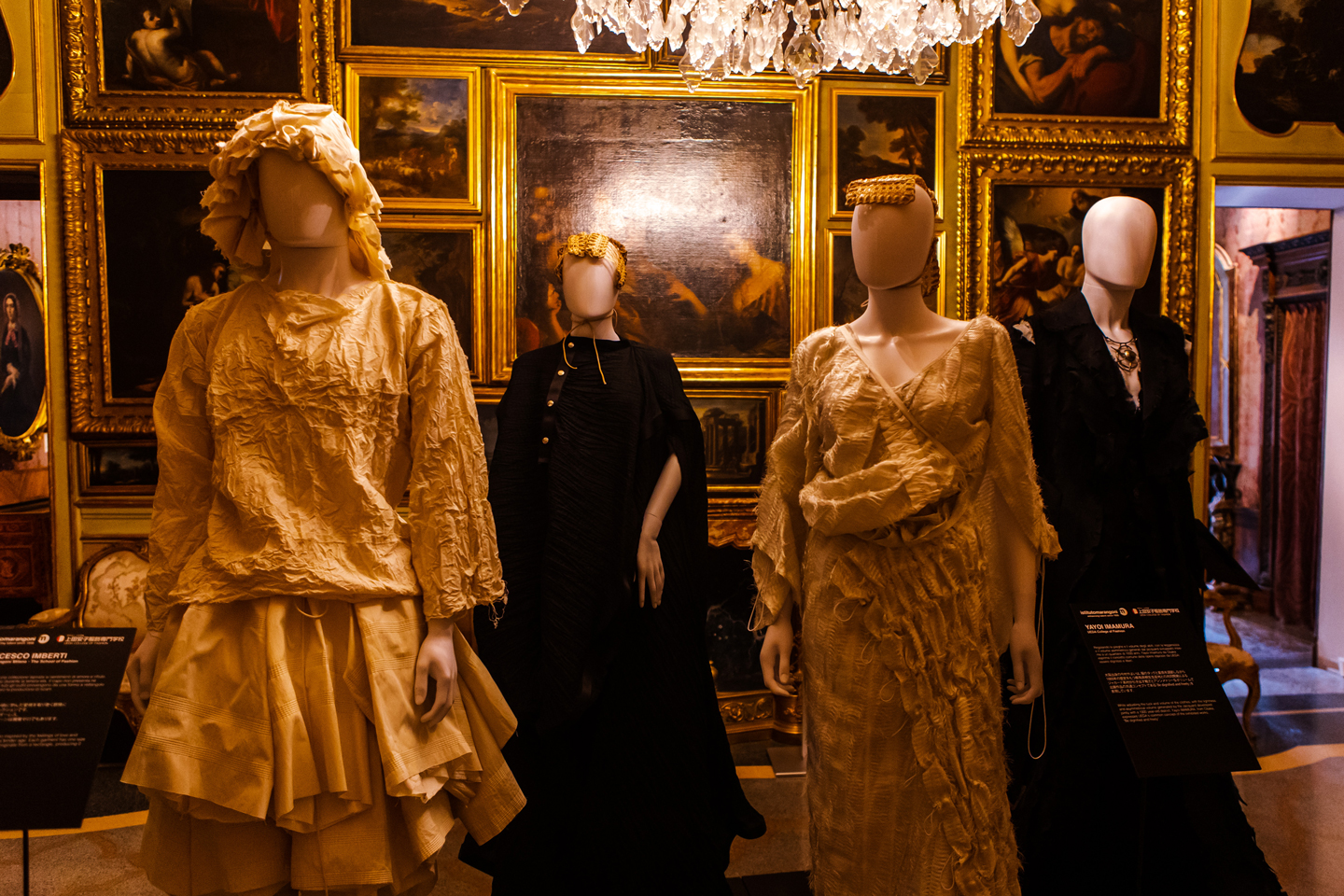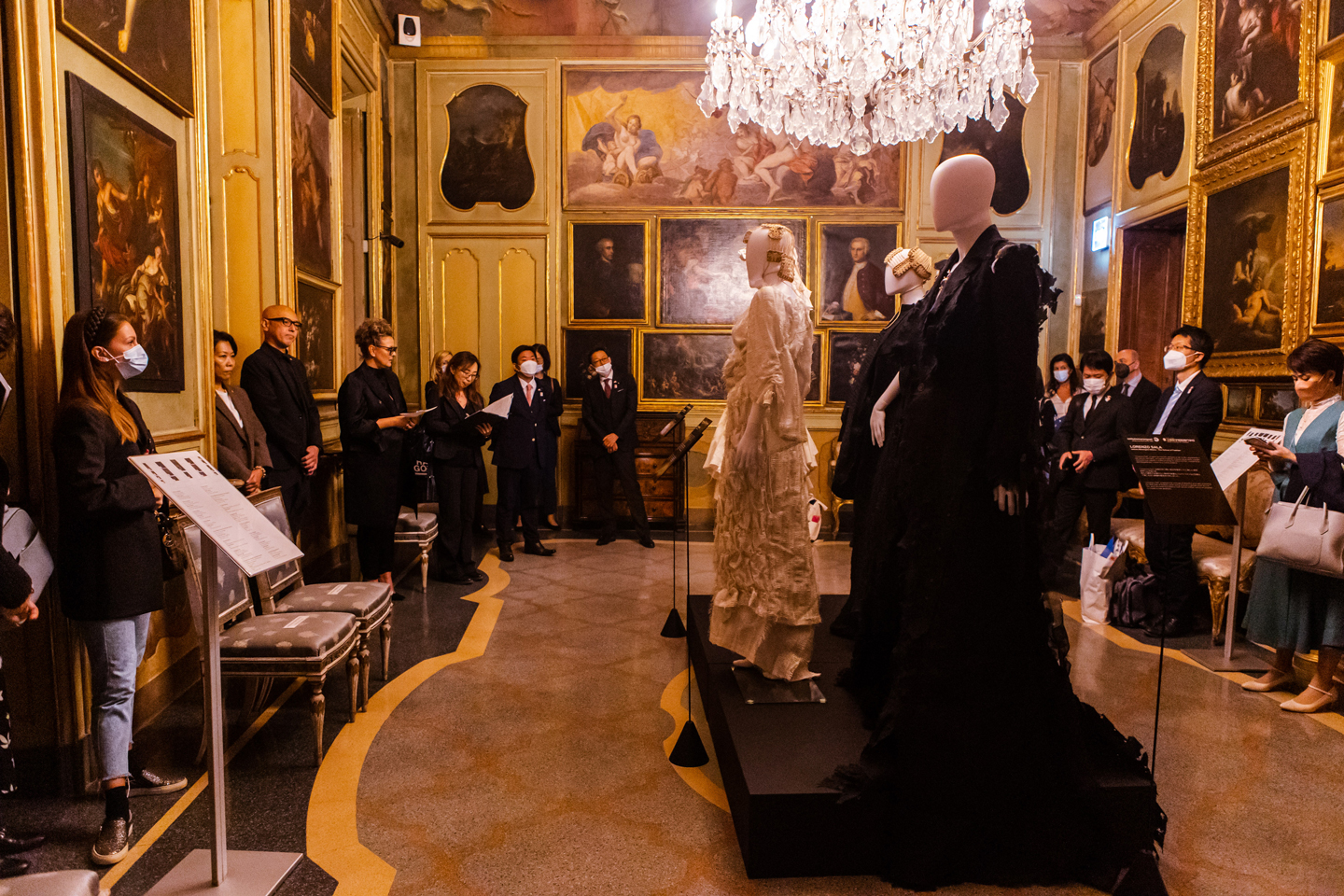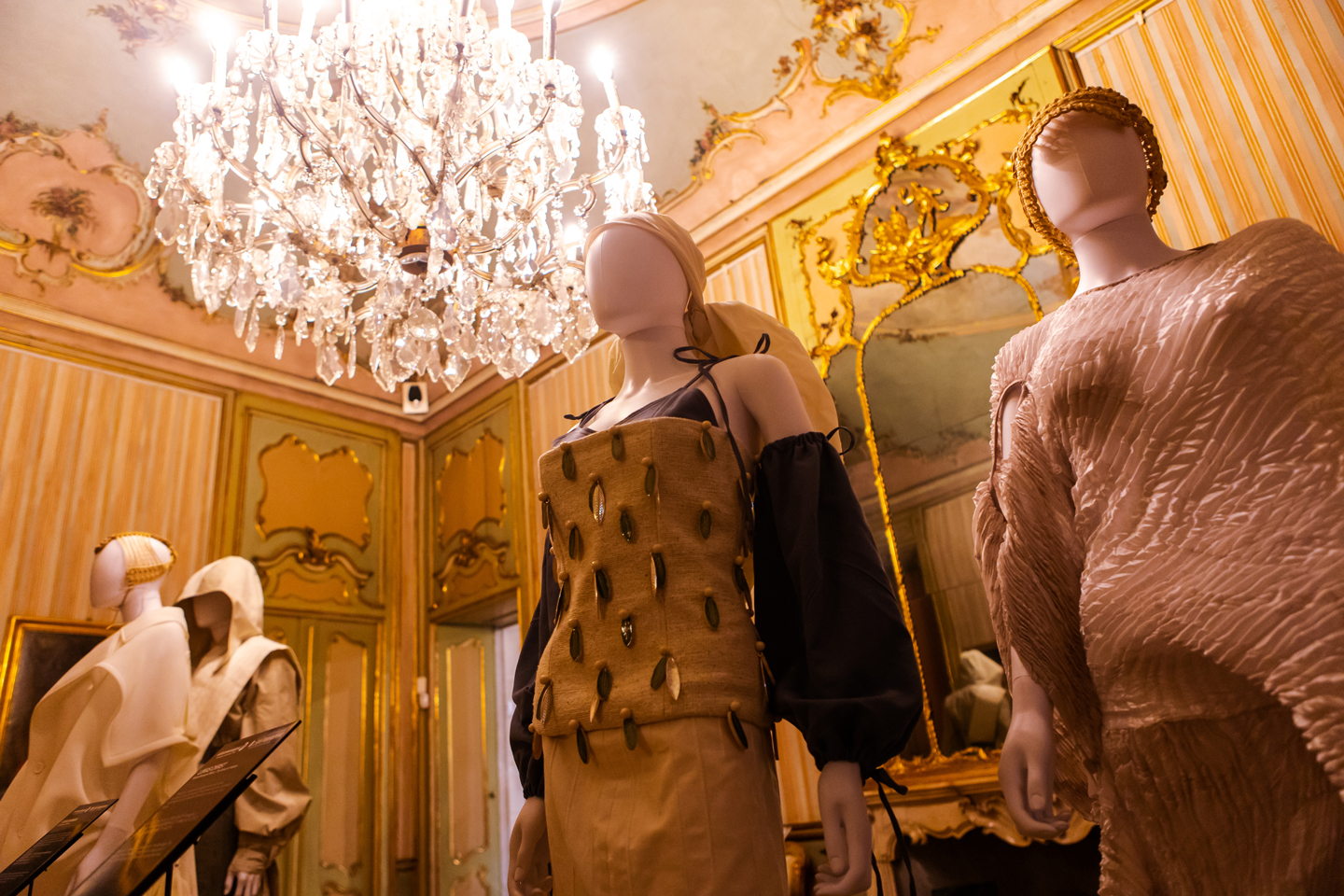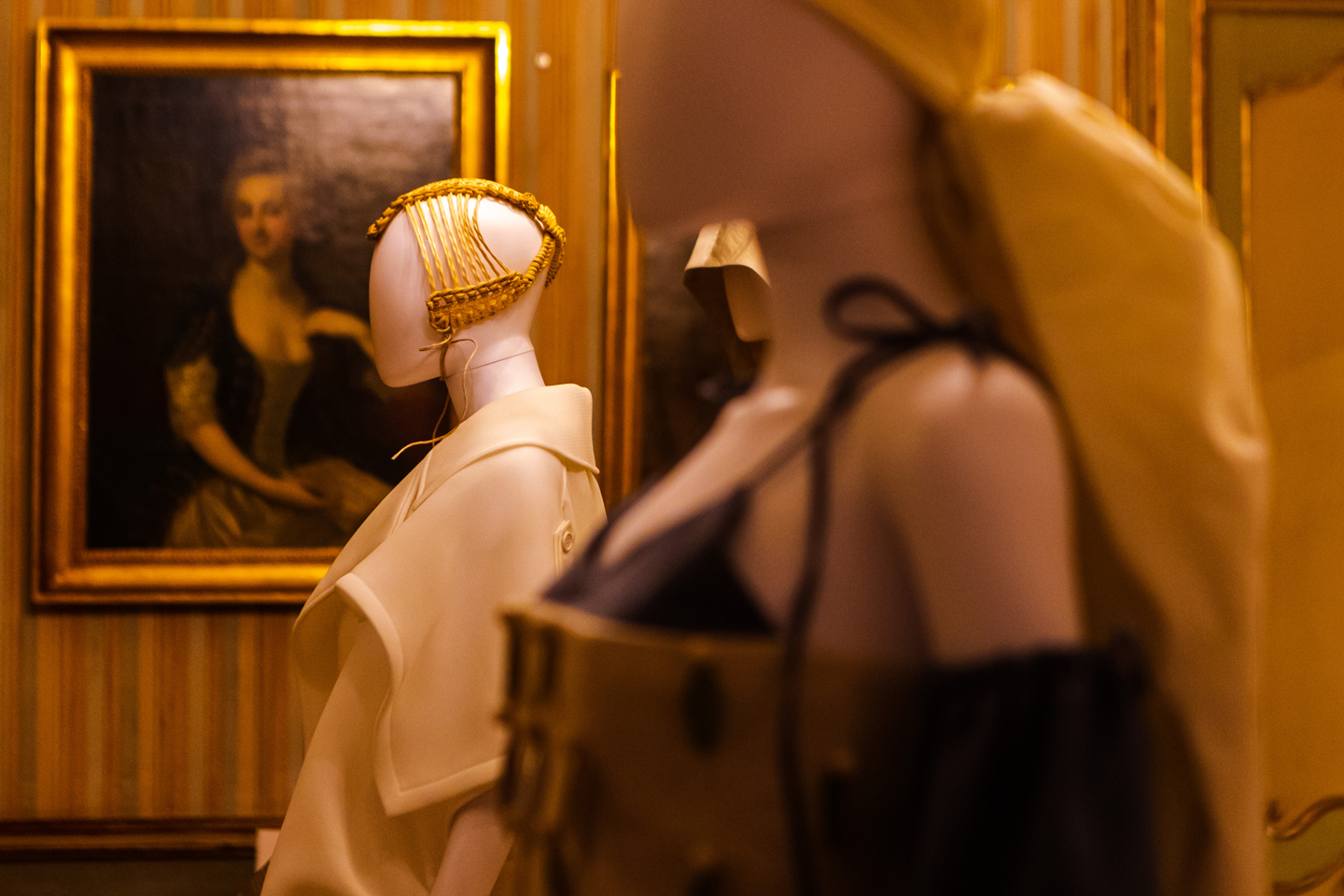


MILAN – Istituto Marangoni Milano and Osaka’s UEDA College of Fashion teamed up for “Fatto a Mano,” an exclusive exhibition connecting Italian and Japanese cultures through craftsmanship. Held at Palazzo Morando, the exposition was part of the 40th-anniversary celebrations of the twinning between Milan and Osaka, as the Municipality of Milan chose Istituto Marangoni Milano to represent the city together with its long-time partner, UEDA College of Fashion. A joint presentation between the two renowned fashion schools, “Fatto a Mano” gave a new life to the harmony of Made in Italy style, recreating shapes and volumes that elegantly blended with the heritage of Japanese crafts. It was all about fashion, tradition and a pure fusion of the artistic beauty hidden behind the walls of this Italian building.
A real “folie dans l’art.” We might call that a fusion between two follies, or two worlds of follies, with a collection of clothes and volumes on one side and an array of colours and masters’ brushstrokes on the other. The lightness of hand-worked fabrics and manual skills evoked the delicacy of brushstrokes on canvas. So, Istituto Marangoni and UEDA created their exhibition, unconsciously mixing fashion and art in a world of follies and tradition.

Istituto Marangoni Milano and Osaka’s UEDA College of Fashion teamed up for “Fatto a Mano,” an exclusive exhibition at Palazzo Morando
Palazzo Morando, a historic eighteenth-century residence in the heart of Milan and former home of Countess Lydia Caprara di Montalto, hosted the exhibition in two of the building’s most famous rooms. The magic began in the Sala dell’Olimpo, a small and essential room with sofas and armchairs. Here, the colours are faint, but the collection exposed in the centre of the room stole the visitor’s attention, drawing it back to the late twentieth-century picture gallery displayed all around on the walls.
UEDA College of Fashion’s Reika Hayashi and Yayoi Imamura played with the concept of lightness of volume. And they designed two creations of remarkable elegance and sophistication, with a soft and airy look that can definitely be felt on the skin. What left us breathless were their works’ lengths, draping and the contrast between light and dark.
Instead, Lorenzo Sala and Francesco Imberti from Istituto Marangoni Milano played on the ideas fabrics can express. Unsavory Self is a tribute to beauty’s ugliness: this collection’s dark side is embodied by the unusual materials chosen by Sala and his urge to stitch together torn pieces. Lorenzo Sala took us on a visual investigation into beauty, into the essence of beauty. And no, not what we are used to perceiving as beauty, but what beauty actually is. You might say that this is innovation, that this is an innovative way of making beauty, but it is not. Instead, it is an idea of how fashion and the fashion-making process can get to show themselves for what they are and not for what it is convenient for them to be.

The “Fatto a Mano” exhibition was part of the 40th-anniversary celebrations of the twinning between Milan and Osaka
The atmosphere changed dramatically in the exhibition’s second part, where four more student creations were displayed in the Sala D’Ercole. Pink and shades of pink were the highlight, and the floral decoration by Giovanni Battista Ranchelli on the ceiling completed the sense of fragility in the room. Here, Ayuka Hayashi and Hibiki Harasawa, students at the UEDA College of Fashion, contemplated the concept of “being dignified and free” and recreated the perception of softness and floating. The stretch fabric creates a geometric shape, and the slightly transparent colour reveals the body’s silhouette. Depending on where one looked, a new detail would emerge, as if it were a game of perspectives.

The “Fatto a Mano” exhibition at Palazzo Morando, Milan
Finally, Istituto Marangoni Milano’s Lukas Christ and Jaehee Koo let their creations speak through the essence of craftsmanship and the tradition of purely Italian fabrics. The silhouettes of their dresses were charming and sophisticated yet classic, with a touch of revolution. The bleu clair and the vert foncé, the headband and the hood, the corset and the crop shirt, and the mid-length skirt and the trouser skirt are all ideas of classic Italian fashion wardrobe must-haves. Re-worked using materials and shapes with an oriental flavour, they marked the meeting point between Eastern and Western cultures.

The “Fatto a Mano” exhibition at Palazzo Morando, Milan
What are we supposed to take away from all this? Fashion-making is not about twisting the great classics or tediously repeating long-standing traditions. It is about making art, and making art takes inspiration from everything around us. You can revive traditions, create new shapes, play with colours and fabrics, mix cultures, and work with the imagination and curiosity du jour. Our students made it all possible without lacking precision and expertise.
Francesca Antonelli
Master's student in Fashion Promotion, Communication and Digital Media, Milan



